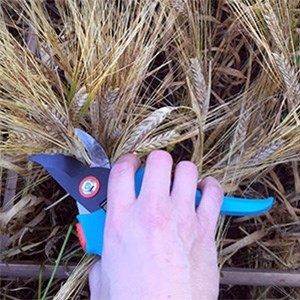Soil and Crop Inventory

The program shall, in accordance with Swedish environmental objectives, in an area representative way describe the status for arable land and crop quality in relation to soil status, management practices and cropping systems.
The Swedish soil and crop inventory started in the 1990s and is financed by the Swedish Environmental Protection agency.
The program shall, in accordance with Swedish environmental objectives, in an area representative way describe the status for arable land and crop quality in relation to soil status, management practices and cropping systems.
Since 2001 the program covers 2 000 sampling sites with exact coordinates
evenly spread over Swedish arable land. For the sampling sites from the 1990s the exact coordinates were not recorded so they cannot be resampled. At each of the new sampling site a plough layer (0-20 cm) sample is collected every 10th year. If the existing crop is winter wheat, spring barley or oats a grain sample is also taken. At each sampling site a sub soil (40-60 cm) sample is also taken when first visited. In the ongoing third sampling round sampling will be made in the years 2011, 2013, 2015 and 2017.
Top soils samples are analysed for total carbon and total nitrogen, carbonate carbon, pH, exchangeable cat ions (Ca, K, Mg, Na and acidity–from this data cation exchange capacity and degree of base saturation are calculated) and plant nutrients (K-AL, K-HCl, P-AL, P-HCl). For estimation of phosphorus adsorption index Al-AL och Fe-AL are also determined in the ongoing sampling round. In the two first samplings rounds trace elements were also sampled. Plant sampled are analysed for concentrations of macro nutrients and trace elements. On sub soil samples from the new sites only analysis of texture has so far been made.
Sub-soils analysed for, pH, trace elements and P-HCl are also available
from half the number of sites sampled in the 1990s.